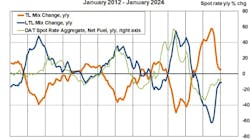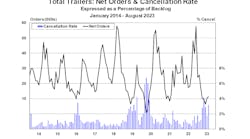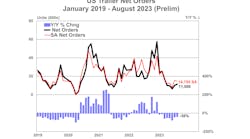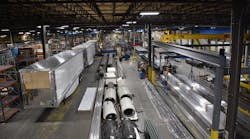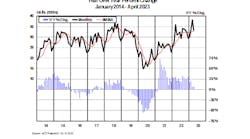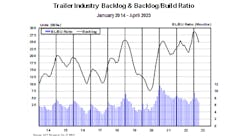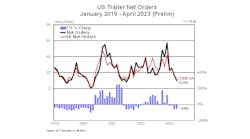Demand for trailers is bouncing back in Europe, but some parts of the continent — and some manufacturers — are faring better than others.
Overall the trailer market in Western Europe grew by 11% in 2010, according to figures compiled by CLEAR, a research firm based in the United Kingdom. In some years, that growth would be considered a strong gain, but not this year.
“Given that the market fell by 52% in 2008-2009, this does not represent a spectacular recovery in demand,” says Gary Beecroft, managing director of CLEAR. “However, it is calculated that production may have increased by 47%, as destocking turned into restocking and exports recovered on top of the extra domestic demand.”
The market for truck trailers was varied among the 15 nations that CLEAR studies. Four countries, including France and Belgium, saw their trailer market continue to fall in 2010. Six countries, including the U K and Germany saw double-digit percentage growth in 2010.
CLEAR expects that the trailer market will improve among all 15 countries this year, and almost all should experience further growth in 2012.
The European trailer market was similar to that of the US during the downturn — high-volume trailers dropped sharply, and specialty trailers off less sharply. Dry-freight vans, curtain-side trailers, and container chassis all took big hits, while refrigerated vans, dump trailers and tanks held relatively steady.
For the first time, the overall size of the trailer fleet in Europe fell in 2009 and will do so again in 2010, Beecroft says. He predicts it will be 2015 before the number of trailers in operation will return to 2008 levels.
“The effects of this will be quite profound,” he said. “In effect, we have witnessed the end of everlasting growth in the trailer fleet of Western Europe. It is quite possible that the 2007 level of trailer demand will not be exceeded in the next ten years. Even in the long term, the total size of the West European trailer fleet will exhibit little growth.”
The last severe downturn in Europe's truck trailer market was in 1993, with demand for trailers falling 31%. The 2008-2009 downturn saw trailer sales fall 51% or 107,000 trailers.
Eastern Europe recovering
Demand for truck trailers in Eastern Europe is expected to bounce back 32% when all the numbers are crunched for 2010, CLEAR predicts, returning the region to the a growth path that trailer manufacturers had enjoyed for several years before the world financial crisis hit.
Demand had dropped 10% in 2008, according to CLEAR, then collapsed 65% in 2009.
“The drop was so drastic that it will take until 2014 to recover to the level of new trailer demand last seen in 2006, which was a little short of 90,000 units,” Beecroft says.
But unlike Western Europe, the drop in demand did not lead to a fall in the size of the trailer fleet. Even in 2009, the trailer population was estimated to have grown 3%.
“Trailer demand in the countries of Eastern Europe will recover at different rates. Some will move back onto a high growth path quite quickly. Others experienced such rapid growth from 2002 to 2007 that they now have nearly enough trailers to meet their countries' transport needs. In these cases, trailer demand will never return to the levels seen in 2006-2007,” Beecroft says.
Many Eastern European countries joined the European Union in 2004, an event that triggered a boom in trailer demand — a compound annual growth rate of 26.3%. Demand broke the 100,000 unit barrier in 2007, but the trailer market fell by 65% in 2009 - a much larger percentage fall than occurred in Western Europe.
The East European Trailer Market Report (December 2010), with forecasts to 2014, can be obtained from CLEAR by visiting www.clear.talktalk.net.
German manufacturers optimistic
The European trailer market may be showing mixed results, but two of Germany's largest companies posted strong results in 2010.
Schmitz Cargobull, Germany's largest trailer manufacturer, reported selling more trailers during the first half of its fiscal year (beginning in March 2010) than it produced for all of the previous year (March 2009-March 2010). The company produced 12,818 vehicles during the 2009/2010 business year.
Reduced working hours and lay-offs are no longer needed, the company says. Production at one of the main plant in Altenberge was increased from single-shift to double-shift working in September.
“Schmitz Cargobull's order situation has improved considerably,” says. Ulrich Schümer, chief executive officer. “We are currently experiencing a strong rise in demand from Russia, Poland, and Hungary. Overall production during the 2010-2011 business year will clearly increase.”
Kögel, another leading trailer manufacturer in Germany, delivered over 5,000 trailers in 2010. The company saw what it termed “a drastic increase” in orders, particularly in the second half of the year.
Management expects to produce more than 10,000 trailers in 2011.
